Transcription of Spatial Signal Processing (Beamforming)
1 Spatial Signal Processing (Beamforming)What Is Beamforming? Beamforming is Spatial filtering, a means of transmitting or receiving sound preferentially in some directions over others. Beamforming is exactly analogous to frequency domain analysis of time signals. In time/frequency filtering, the frequency content of a time Signal is revealed by its Fourier transform. In beamforming, the angular (directional) spectrum of a Signal is revealed by Fourier analysis of the way sound excites different parts of the set of transducers. Beamforming can be accomplished physically (shaping and moving a transducer), electrically (analog delay circuitry), or mathematically (digital Signal Processing ).
2 Beamforming Requirements Directivity A beamformer is a Spatial filter and can be used to increase the Signal -to-noise ratio by blocking most of the noise outside the directions of interest. Side lobe control No filter is ideal. Must balance main lobe directivity and side lobe levels, which are related. Beam steering A beamformer can be electronically steered, with some degradation in performance. Beamformer pattern function is frequency dependent: Main lobe narrows with increasing frequency For beamformers made of discrete hydrophones, Spatial aliasing ( grating lobes ) can occur when the the hydrophones are spaced a wavelength or greater Simple Beamformer plane wave signalwave frontsdh1h20plane wave has wavelength = c/f, where f is the frequencyc is the speed of sound h1h1are two omnidirectional hydrophonesAnalysis of Simple Beamformer Given a Signal incident at the center C of the array: Then the signals at the two hydrophones are.
3 Where The pattern function of the dipole is the normalized response of the dipole as a function of angle:)t(ie)t(R)t(s = sind)(nn1 = =+= sindcossss)(b21)t(i)t(iiiee)t(R)t(s = Beam Pattern of Simple Beamformer-150-100-50050100150-60-50-40- 30-20-100 , degreesPattern Loss, dBPattern Loss vs. Angle of Incidence of Plane WaveFor Two Element Beamformer, /2 Element Spacing0-10-20-30-40-50-180-165-150-135- 120-105-90-75-60-45-30-15015304560759010 5120135150165 Polar Plot of Pattern Loss For 2 Element Beamformer /2 Element SpacingBeam Pattern of a 10 Element Array-150-100-50050100150-60-50-40-30-20 -100 , degreesPattern Loss, dBPattern Loss vs.
4 Angle of Incidence of Plane WaveFor Ten Element Beamformer, /2 Spacing0-10-20-30-40-50-165-150-135-120- 105-90-75-60-45-30-150153045607590105120 135150165180 Polar Plot of Pattern Loss For 10 Element Beamformer /2 SpacingBeamforming Amplitude Shading Amplitude shading is applied as a beamforming function. Each hydrophone Signal is multiplied by a shading weight Effect on beam pattern: Used to reduce side lobes Results in main lobe broadeningBeam Pattern of a 10 Element Dolph-Chebychev Shaded Array-80-60-40-20020406080-60-50-40-30-2 0-100 , degreesPattern Loss, dBComparison Beam Pattern Of A 10 Element Dolph-Chebychev BeamformerWith -40 dB Side Lobes And /2 Element Spacing With A UniformlyWeighted 10 Element BeamformerDolph-ChebychevBeamformerUnifo rm BeamformerAnalogy Between Spatial Filtering (Beamforming) and Time-Frequency ProcessingGoals of Spatial SNR for plane wave signals in ambient ocean (distinguish between)
5 Plane wave signals arriving from different the direction from which plane wave signals are of Time-Frequency SNR for narrowband signals in broadband narrowband signals at different the frequency of narrowband signals. 1 0 Spatial angle Ambient noiseangular densityPlane wave at 1 Plane wave at 0 Narrow Spatial filter at 0f1f0 FrequencyBroadbandnoise spectrumSine wave at f1 Sine wave at f0 Narrowbandfilter at f0 Time-Frequency Filtering and BeamformingSNR Calculation: Time-Frequency Filteringresponse power Filter (W/Hz) density spectral power Noise (W/Hz) density spectral power Signal 202 )f(H)f(N)ff( DefineSignal Power Is:(watts) 202202)f(Hdf)f(H)ff(Ps = = SNR Calculation.
6 Time-Frequency Filtering (Cont d) =otherwise 022 102,ff,)f(H If we assumeIdealized rectangularfilter withbandwidth Then the noise power is:(watts) 02 Ndf)f(H)f(NPN= = N0 is the noise levelin bandAnd SNR is: 02 NPPSNRNs==SNR Calculation: Spatial Filteringresponse power angular filter Spatial an)(W/steradi density angular power Noise an)(W/steradi density angular power Signal 202 )(G)(N)( DefineSignal Power Is:(watts) 2024202)(Gdf)(G)(Ps = = SNR Calculation: Time-Frequency Filtering (Cont d) =otherwise 022 102,,)(G If we assumeIdealized cookie cutter beam patternwith width Then the noise power is:(watts) 42Kd)(G)(NPN = = Kis the noise intensityin beamAnd SNR is.
7 KPPSNRNs 2 ==Array Gain and Directivity CalculationsOHArraySNRSNR Gain Array=DefineThen = == 42424202d)(Nd)(G)(Nd)(G)(PPSNROHOHNsOHAs sume plane wave Signal arbitrary noise distribution all for 12=)(GFor the omnidirectional hydrophone,Array Gain and Directivity Calculations (Cont d)For the array, assume it is steered in the direction of 0 and that = == 422424202d)(G)(Nd)(G)(Nd)(G)(PPSNR arrayarrayarrayNsarrayPutting these together yields 1 202=)(GThen = 424d)(G)(Nd)(NAGarrayArray Gain and Directivity Calculations (Cont d)If the noise is isotropic (the same from every direction)Then the Array Gain (AG) becomes the Directivity Index (DI), a performance indexFor the array that is independent of the noise field.
8 K)(N= = 42 4d)(GDIarrayArray Gain and Directivity Index are usually expressed in Hydrophone Spatial Response plane wave signalwave frontsLL/2-L/20plane wave has wavelength = c/f, where fis the frequencycis the speed of sound x x1X1sin Line Hydrophone Spatial Response (Cont d)The received Signal isLet the hydrophone s response or sensitivity at the point xbe g(x).Then, the total hydrophone response is xcsinxts)t(spoint at origin theat + dx)csinxt(s)x(g)t(s/L/Lout +=22 Line Hydrophone Spatial Response (Cont d)Using properties of the Fourier Transform:And:)f(S)csinfxiexp(dte)csinxt (sfti 2 2=+ dte)t(s)f(Sfti = 2df)f(S)fticsinfxiexp()csinxt(s +=+ 2 2 Or:Line Hydrophone Spatial Response (Cont d)Thus, the total hydrophone response can be written.
9 Wheredfdx)f(S)fticsinfxiexp()x(g)t(s/L/L out += 2 222We call g(x)the aperture functionand G((fsin )/c)the pattern are a Fourier Transform )csinfxiexp()x(g)f(Sfti/L/L 222 2 = dfe)csinf(G)f(Sfti 2 22 2 /L/Ldxx)csinf(iexp)x(g)csinf(GResponse To Plane WaveAn Example:Unit Amplitude Plane Wave from direction 0:Note that the output is the input Signal modulated by the value of the pattern function at 0tfje)t(s0 2=dfe)csinf(G)ff()t(sftiout 200 =tfjecsinfG0 200 =The Line Hydrophone Response is:)ff()f(S0 =Response To Plane Wave (Cont d)The pattern function is the same as the angular power response defined we use electrical angle u: sincsinfu= instead of physical angle.
10 Uniform Aperture FunctionConsider a uniform aperture function =otherwise ,LxL,L)x(g0221 The pattern function is:)Lu(Lu)Lusin(LujeLujeeLujeedxLdxe)x(g )u(G/L/Luxj/Luj/Luj/Luj/Luj/L/Luxjsinc euxj2 == = === 2 2 2122 22 22 22 22 222 2 Rectangular Aperture Function and Pattern FunctionArray Main Lobe Width (Beamwidth)212 23= dBG3 dB (Half-Power) BeamwidthTo find it, solveFordB3 Beamwidth Calculation Example: Uniform Weighting() === 3912 3912 13133212 2 33= dBdBLuLusin. increasing ofeffect the Note Fordeg 50radians = Line Array of Discrete Elements()nNnnxx ag(x) = =1()()ndxaxgdNMMnn =+= = , spacing uniform and (Odd), 1 2M ForAperture Function:()dxexgG(u) uxj2 =()dxendxauxjnMMn 2 = =Pattern Function: (N odd, uniform spacing)ndujnMMnea 2 ==xL = NddUniformly Weighted Discrete Line Array dujnern,Na2:define yTemporarilodd.
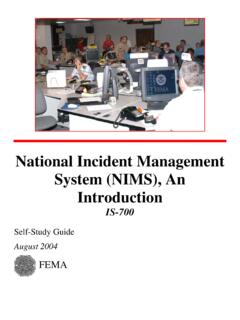


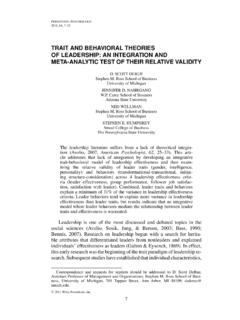

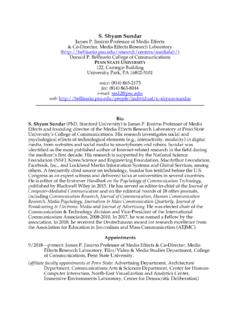

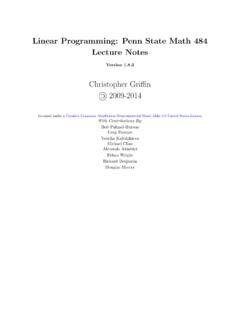


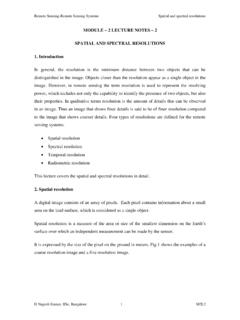
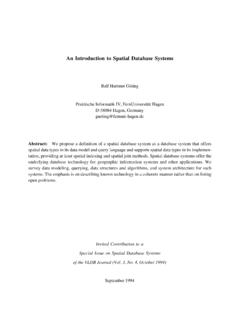


![Abstract arXiv:1411.4038v2 [cs.CV] 8 Mar 2015](/cache/preview/e/8/a/1/0/5/9/a/thumb-e8a1059a2748cde7ba3d756f44e4ca34.jpg)
![Abstract arXiv:1506.02025v3 [cs.CV] 4 Feb 2016](/cache/preview/2/1/c/f/e/5/8/b/thumb-21cfe58bbaf4f01954b3cf2f93929859.jpg)

